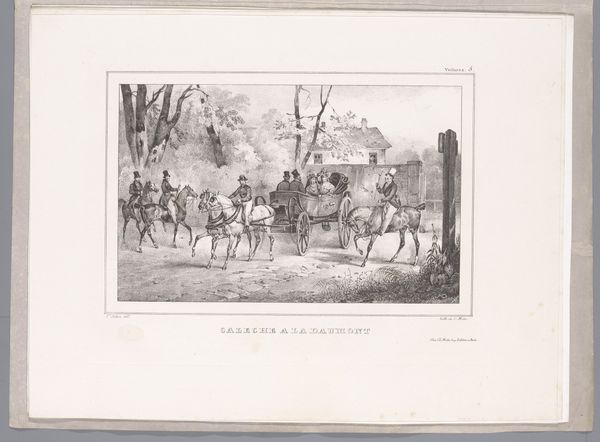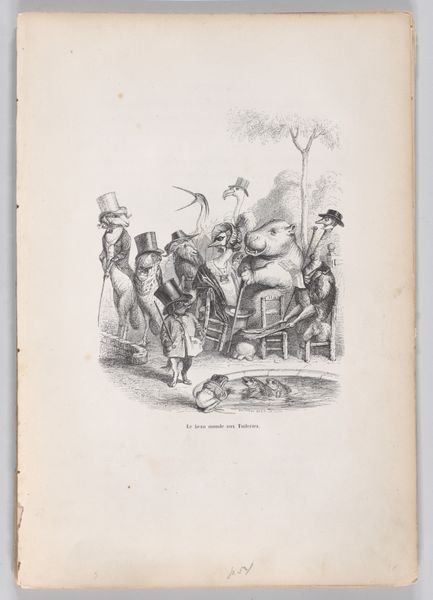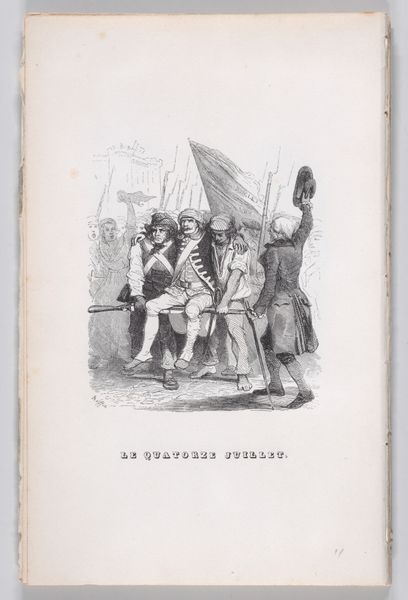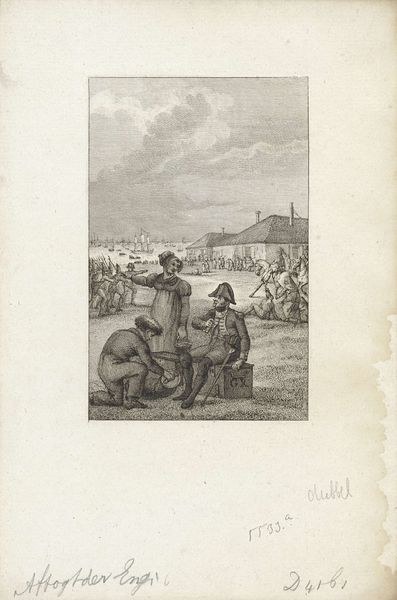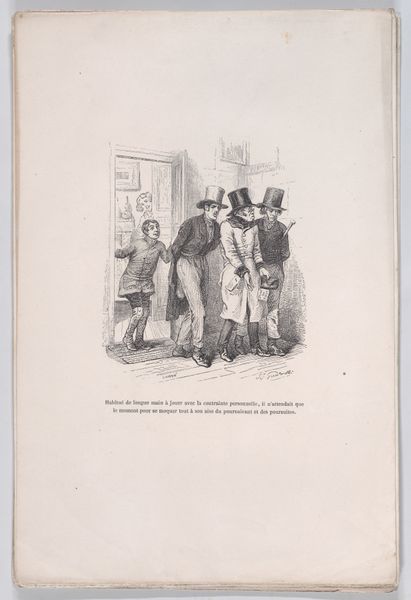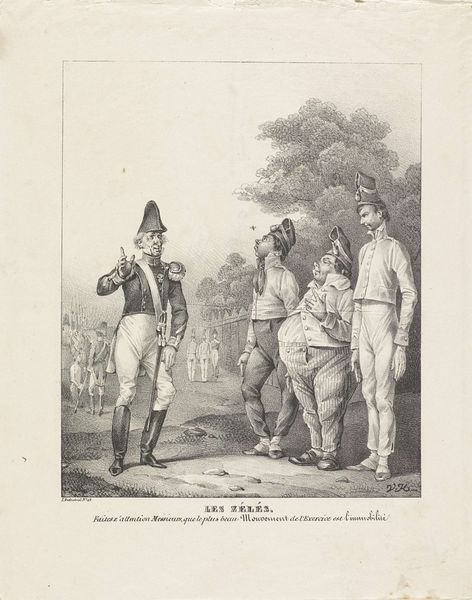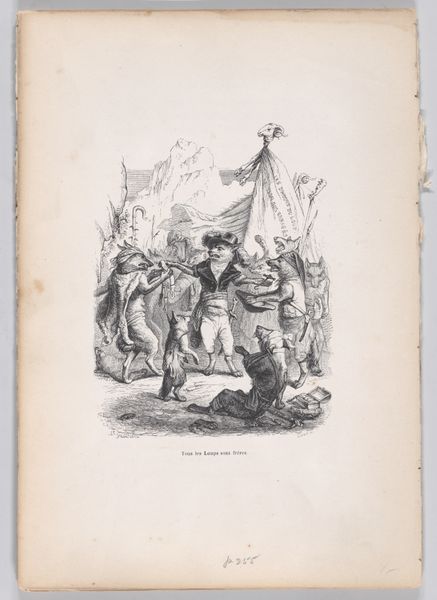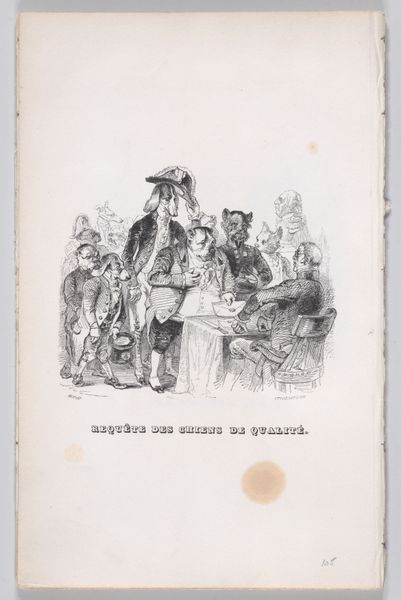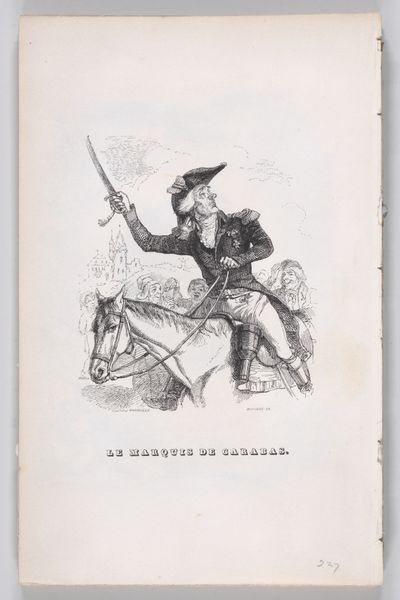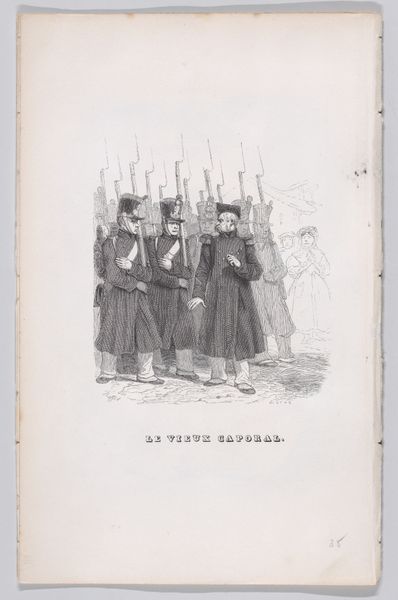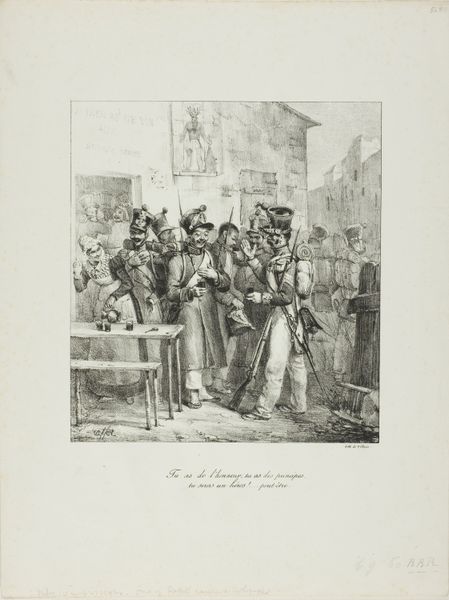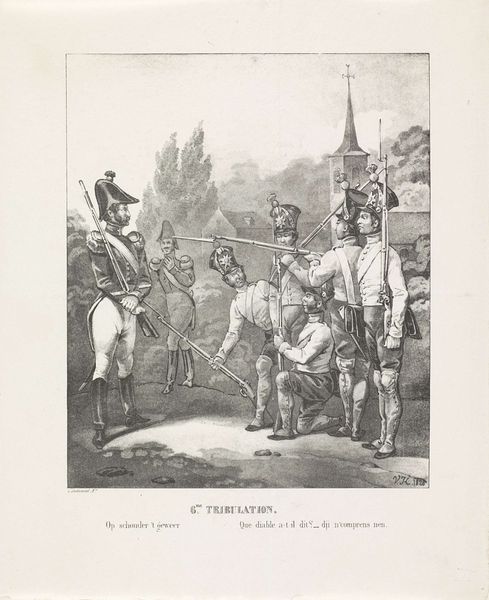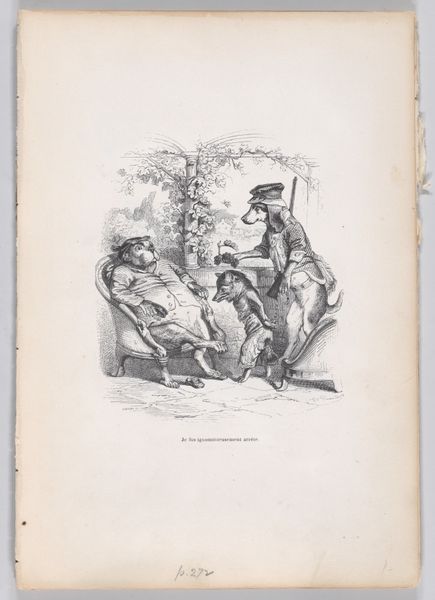
"The Barbaric Holy Alliance" from The Complete Works of Béranger 1836
0:00
0:00
drawing, graphic-art, print, engraving
#
drawing
#
graphic-art
#
narrative-art
# print
#
romanticism
#
history-painting
#
engraving
Dimensions: Sheet: 8 5/8 × 5 1/2 in. (21.9 × 14 cm)
Copyright: Public Domain
Curator: Here we have a fascinating engraving by J.J. Grandville, dating back to 1836. It's titled "The Barbaric Holy Alliance," originally appearing in The Complete Works of Béranger. Editor: My immediate impression is one of staged mockery, like a dark comedy. The figures are rigidly posed, yet their expressions seem almost grotesque, a clear display of political dissatisfaction and its performative staging. Curator: Indeed. Grandville was a master of visual satire, and this piece directly criticizes the Holy Alliance – the coalition of European powers attempting to restore monarchical rule after Napoleon. Notice how the figures representing those powers are bedecked with absurd decorations and seem to literally weigh down the French budget, contained in the labeled box behind them, suggesting financial oppression. Editor: The exaggerated uniforms, almost comically oversized, speak to the perceived pomp and circumstance surrounding these leaders. But what strikes me most is the seeming indifference of the central figures towards the actual burden they’re imposing. There’s a stark class disparity visualised; it reflects, or, rather anticipates future revolutionary movements and the questioning of authority. Curator: Precisely. This was a period rife with social and political upheaval. Grandville’s print wasn't merely documenting history; it was actively participating in a public discourse, fueled by Romantic ideals. The use of graphic art here, as opposed to traditional painting, suggests an intention for broader accessibility and dissemination of the message. Editor: Absolutely, and considering its historical context, its resonance echoes today as many citizens battle with their governments. We are perpetually confronted with leaders and structures that appear far removed from the daily burdens they impose on the masses. It reminds us that art often serves as an incredibly potent mirror reflecting not just then, but also now. Curator: Grandville’s print serves as a potent reminder of art’s critical function, acting as both historical document and instrument of social commentary, in the same way museums function now, as places of preservation but also debate. Editor: It's a powerful work—a challenge to power and a demand for accountability that still carries weight today.
Comments
No comments
Be the first to comment and join the conversation on the ultimate creative platform.

